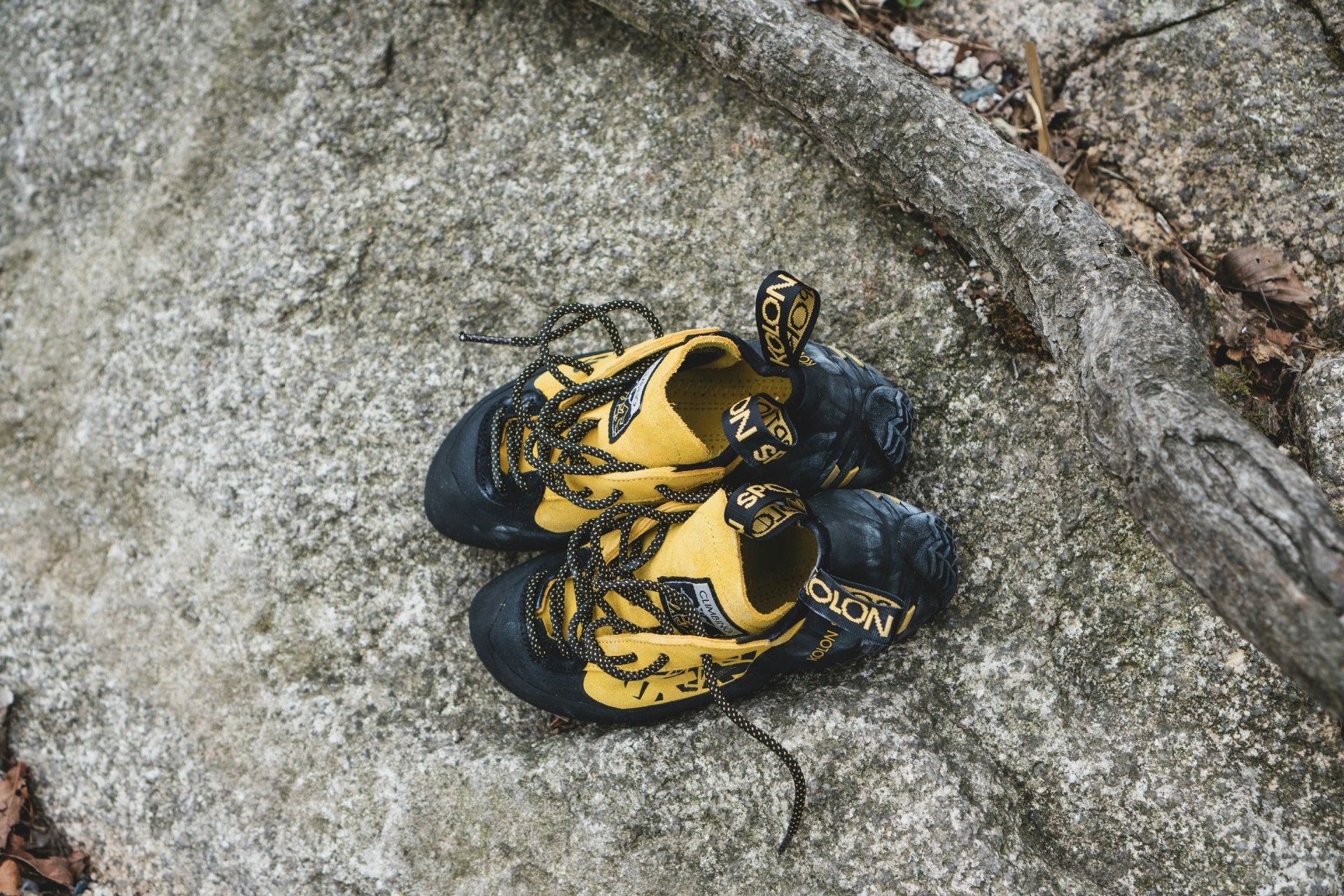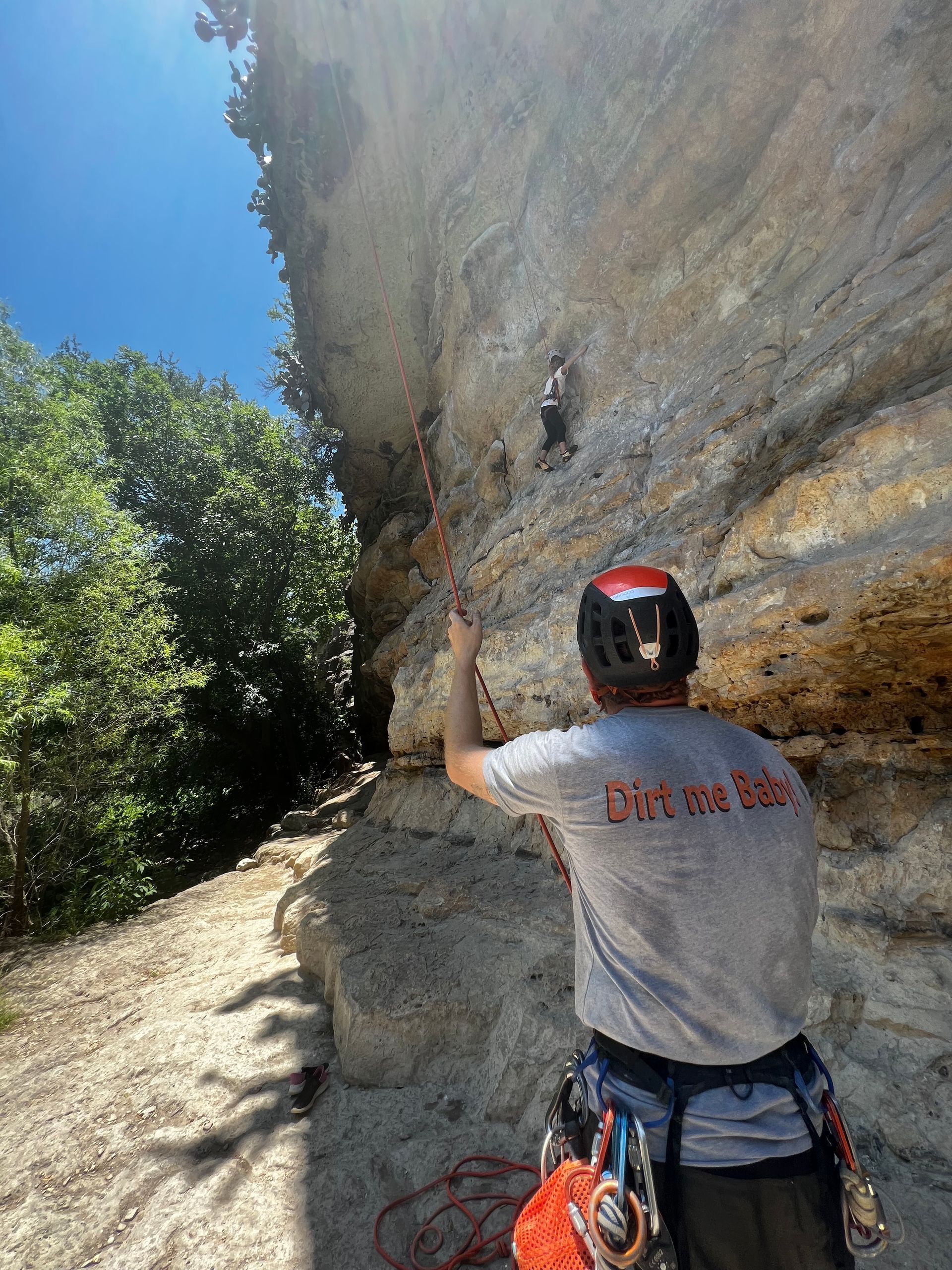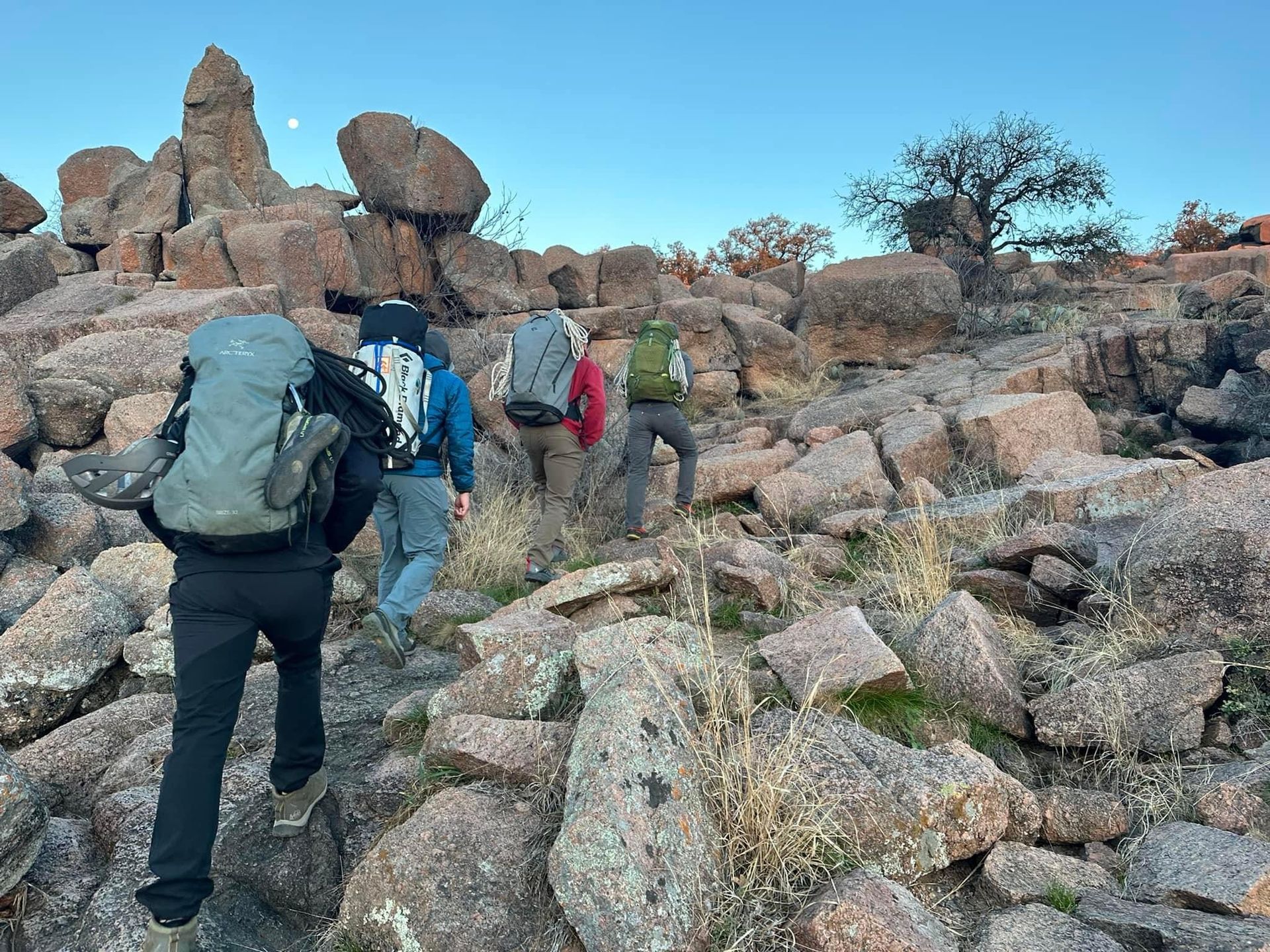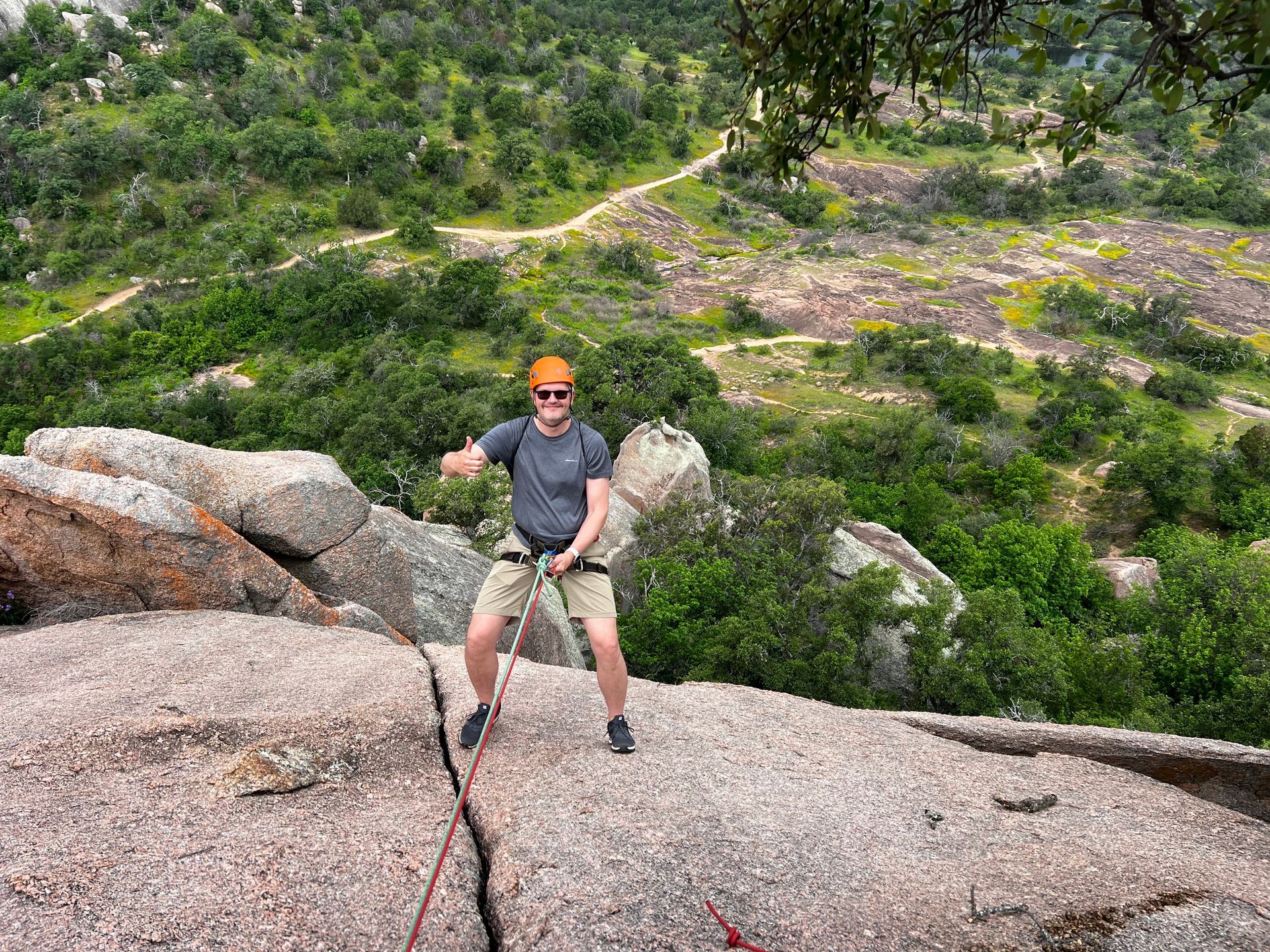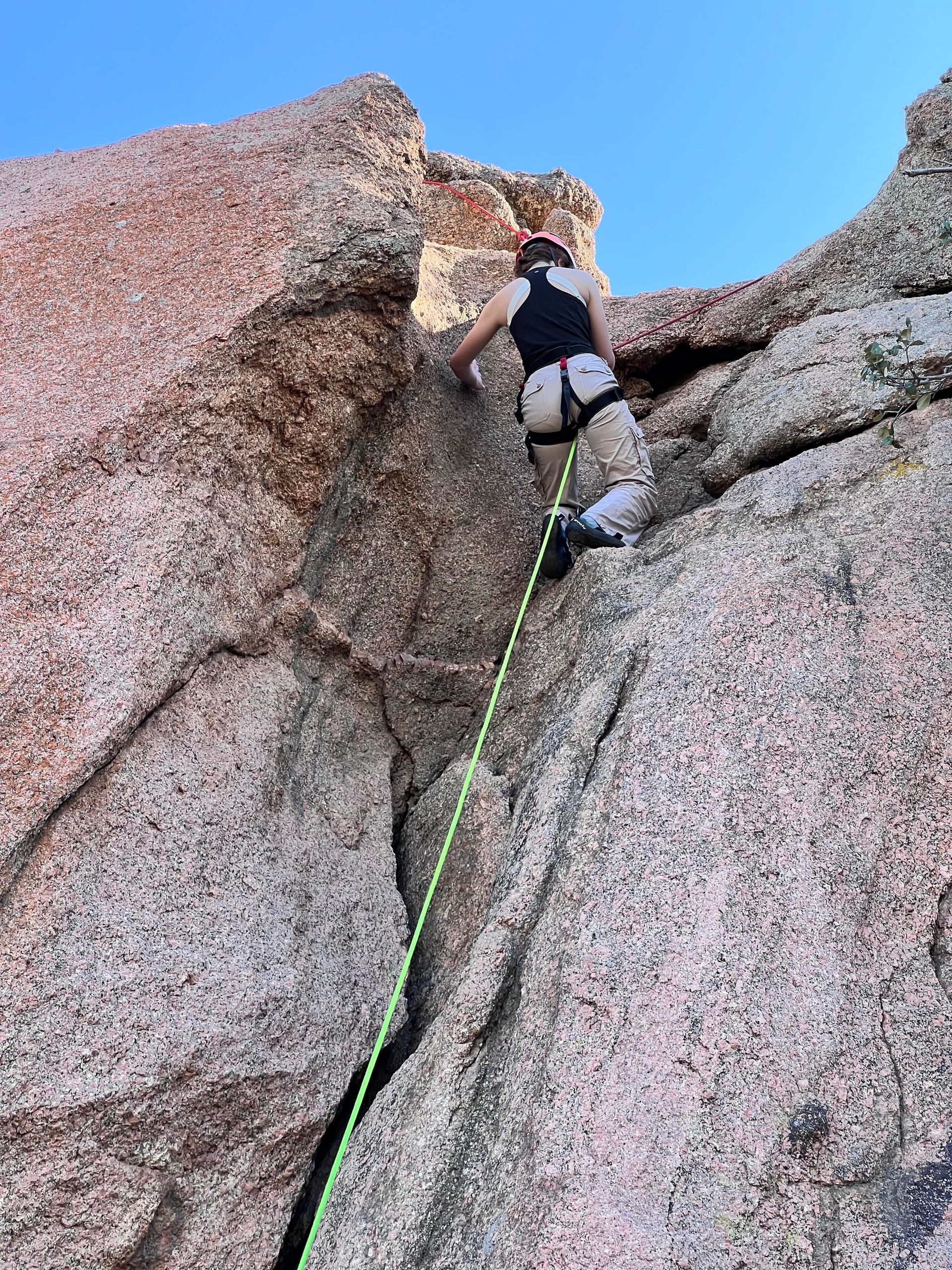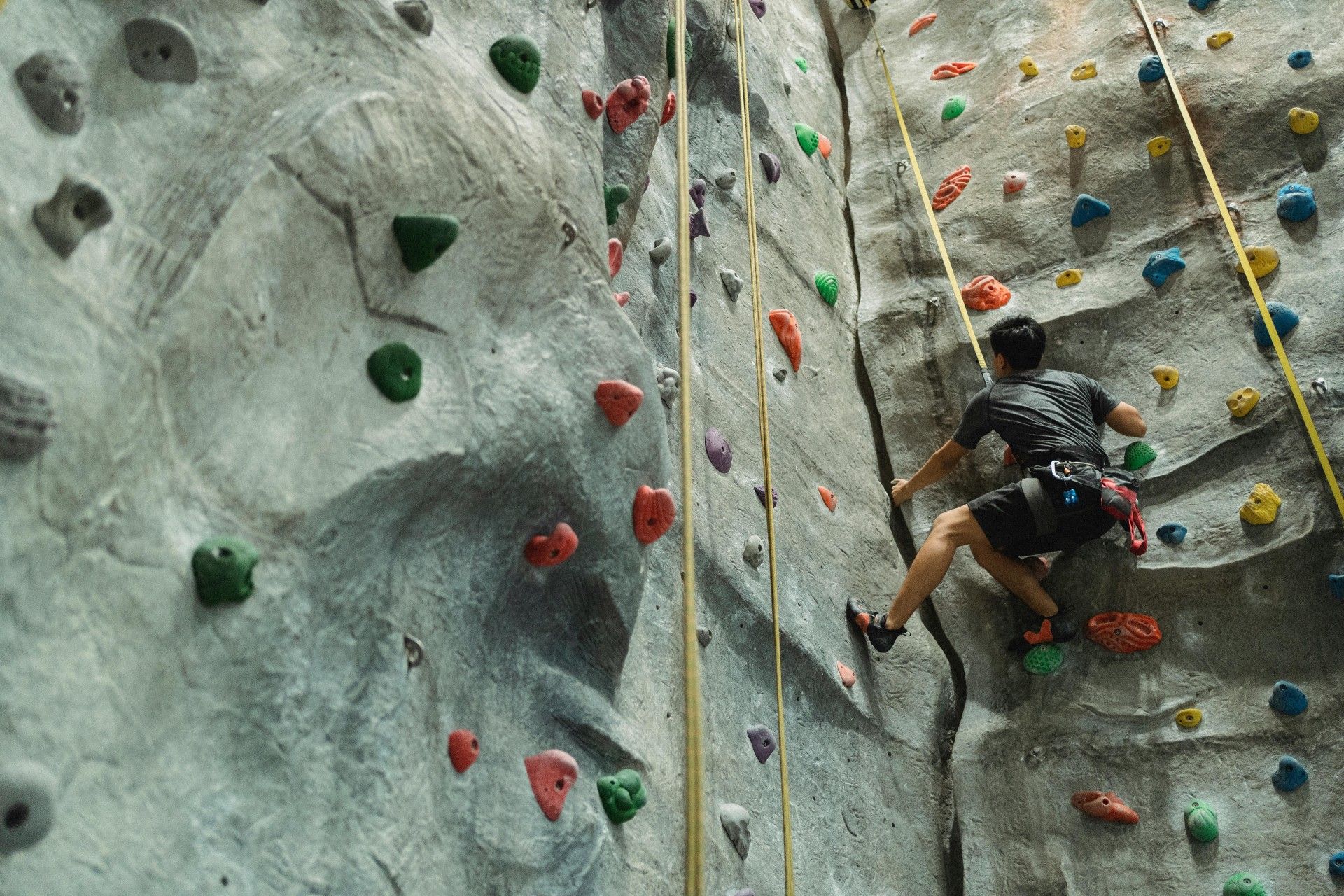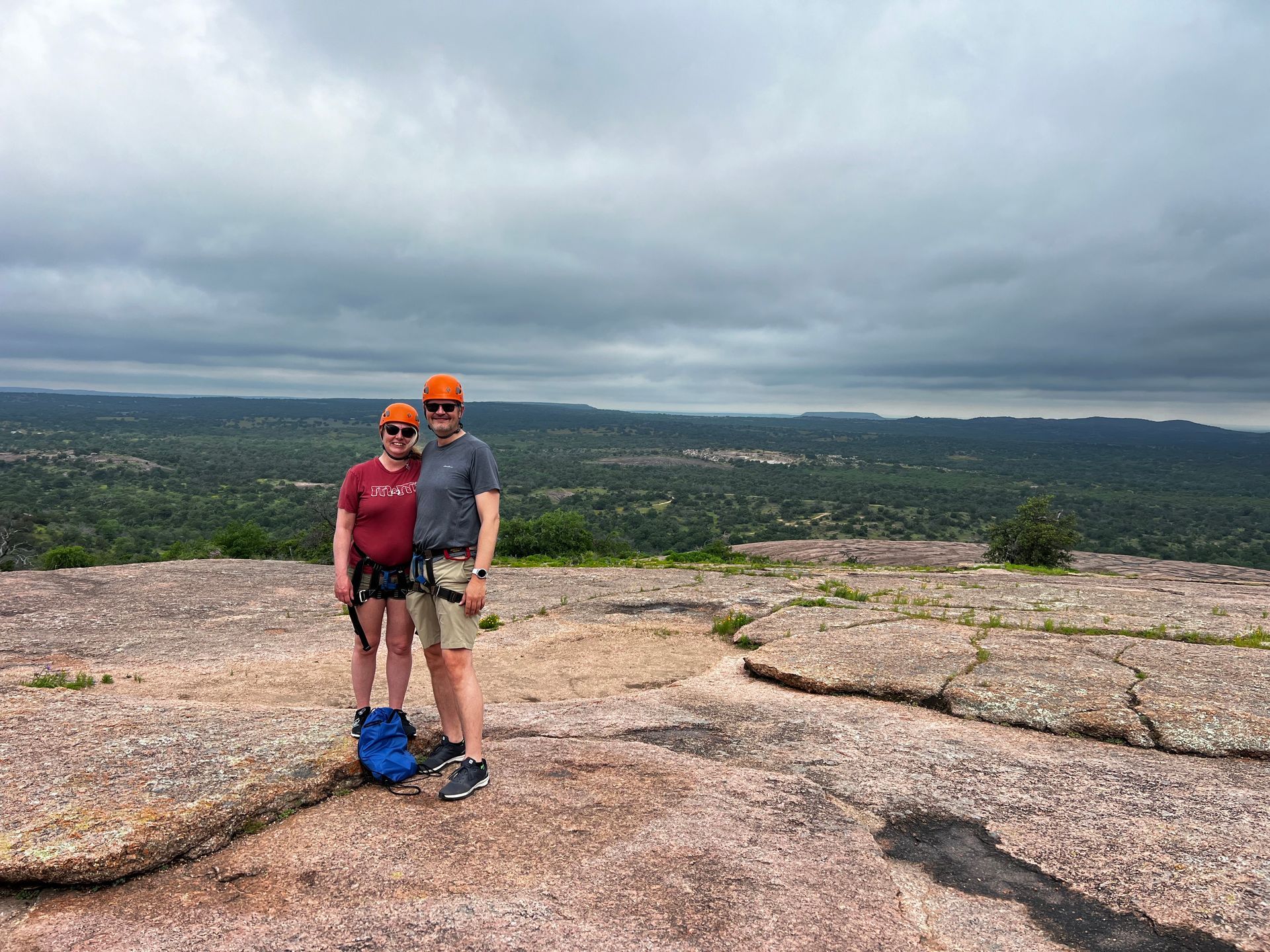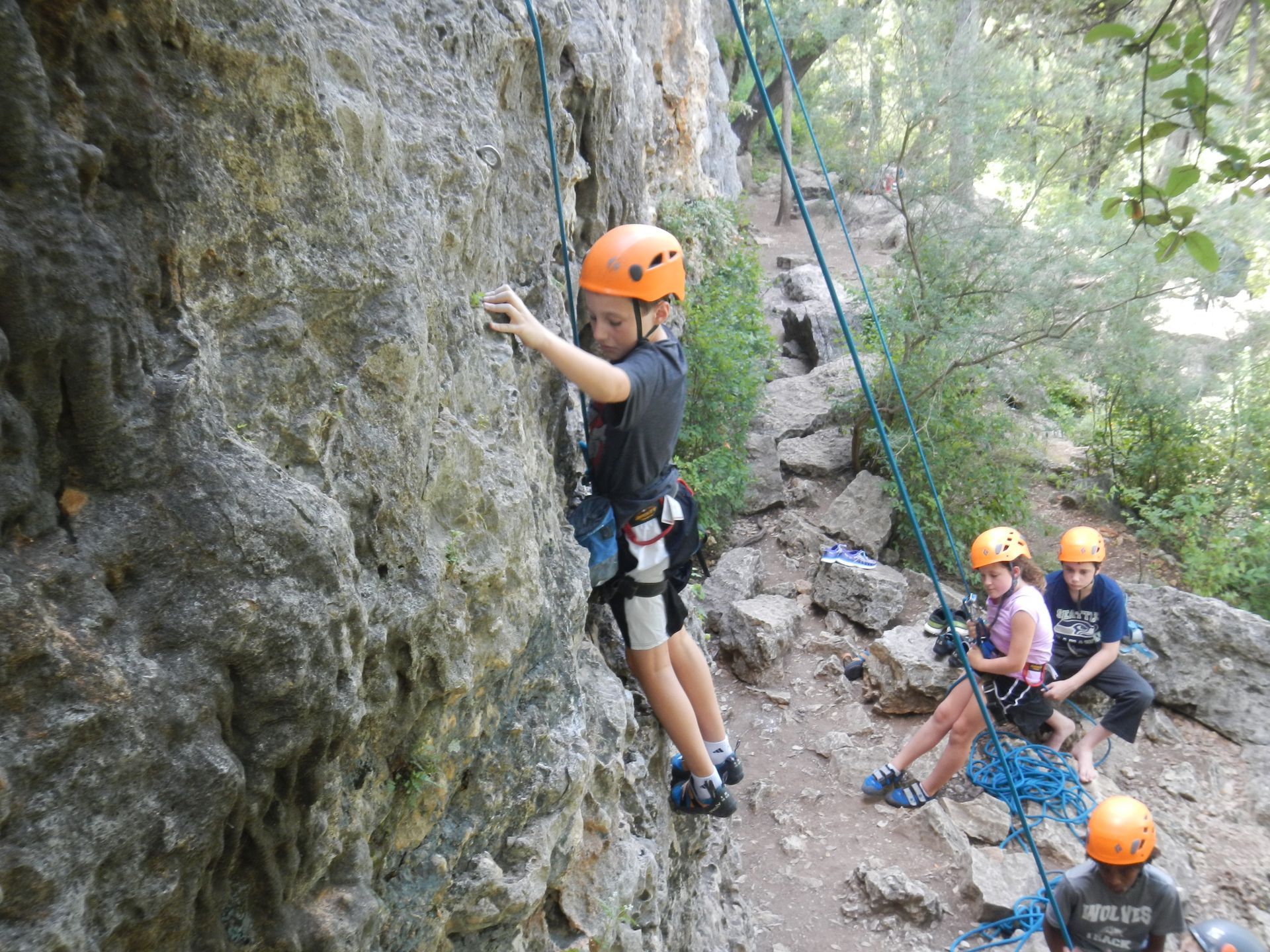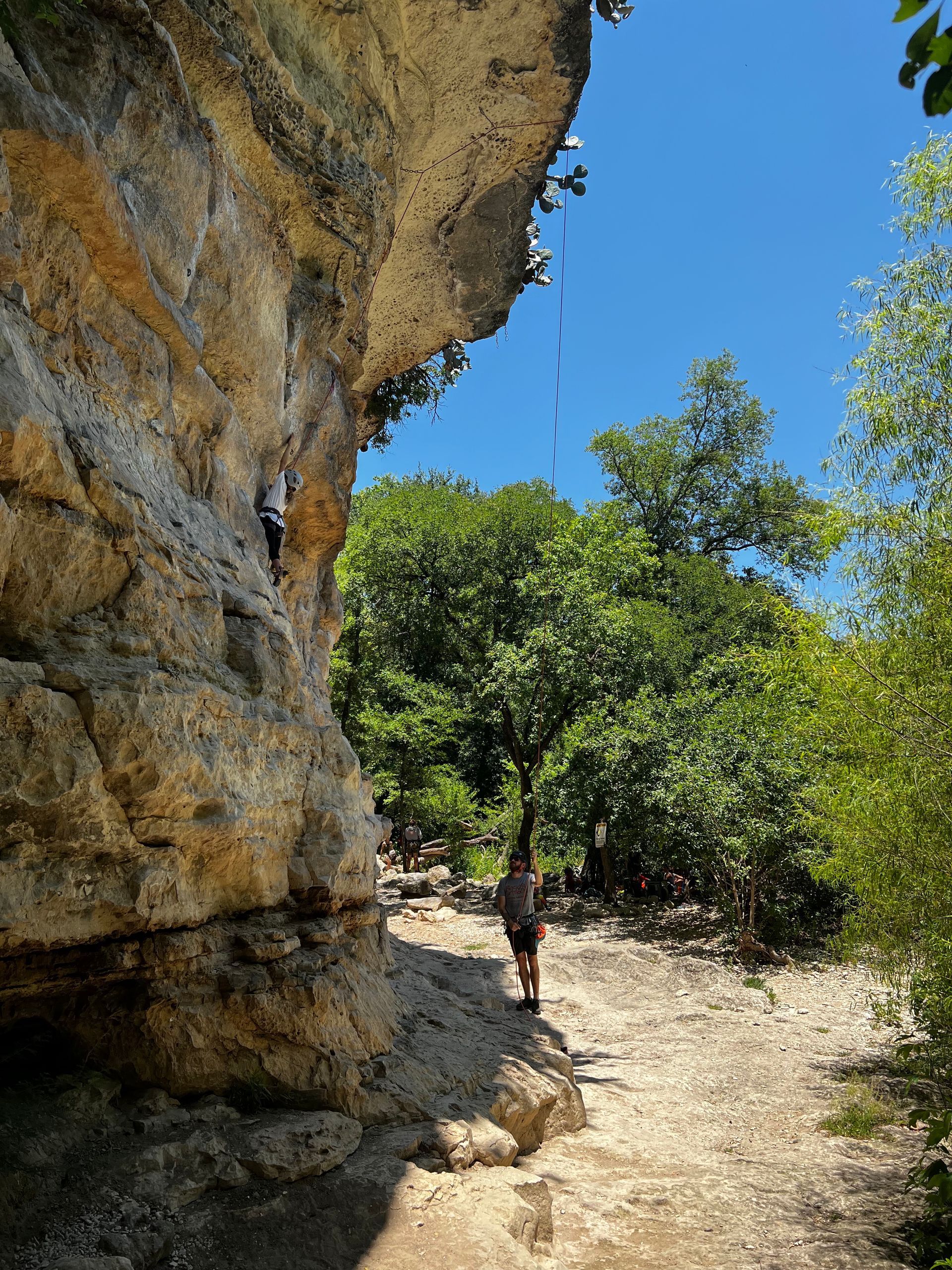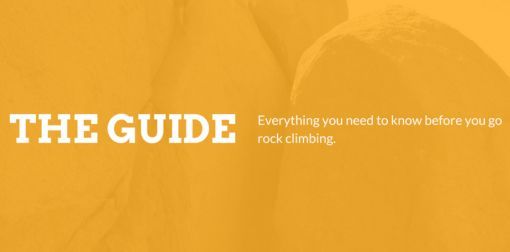Footwear for Climbing in Texas: What Works Best on Real Rock
Footwear for Climbing in Texas: What Works Best on Real Rock
When you picture rock climbing in Texas, you might imagine tall granite walls, sunny limestone cliffs, or shaded routes along a creek. What you might not think about right away is your shoes. But they are one of the most important parts of your climbing experience.
If you are new to outdoor climbing, you may wonder if your regular running or hiking shoes will do the job. The short answer is no. Climbing real rock in Texas means you need footwear that fits well, grips tight, and helps you move with confidence.
Here is what you need to know.
Key Takeaways
- The right climbing shoes are essential for Texas rock surfaces like granite and limestone, giving you grip, balance, and control that regular sneakers can’t provide.
- Choose a shoe type—neutral, moderate, or aggressive—based on your climbing style and the terrain, from beginner-friendly walls to steep routes like Medicine Wall.
- A snug fit is critical: climbing shoes should feel secure without cutting off circulation, ensuring both comfort and precision on real rock.
- For approaches at spots like Mineral Wells or the Greenbelt, consider approach shoes for safe, grippy hiking before switching to climbing shoes.
- Proper care—keeping shoes clean, cool, and off pavement—extends their life, and resoling can save money while keeping performance sharp.
Why Climbing Shoes Matter
The rock surfaces across Texas, from the granite at Enchanted Rock to the limestone at Reimers Ranch, are tough on regular shoes. Running shoes or casual sneakers are too soft, bulky, and slippery for climbing. They do not give you the grip or control you need.
Climbing shoes are made with sticky rubber soles that help you stand on small edges and pockets in the rock. They also fit closely to your feet so you can feel the surface beneath you and use it to your advantage. This connection gives you better balance and control with every move.
Getting the Right Fit
Climbing shoes should feel snug but not painful. They should hold your foot in place without cutting off circulation or crushing your toes. A close fit helps you move with precision, but comfort is still important, especially for beginners.
Try on a few pairs and brands if you can. Each shoe has a different shape, and what works for one person might not work for another. If you are going with a guided tour, you may be able to rent or borrow shoes before buying your own
Types of Climbing Shoes
There are three main types of climbing shoes. The one that is right for you depends on your climbing style and the terrain.
Neutral shoes
Have a flatter shape. They are best for beginners or long days on the wall. These are comfortable and work well on less steep climbs.
Moderate shoes
have a slight curve. They give better performance for vertical or slightly overhanging routes. These are a good choice for many Texas climbing spots.
Aggressive shoes
have a sharp downward curve. They are designed for steep climbs and tough moves. These are more advanced and better suited for experienced climbers.
If you are climbing at
Medicine Wall, aggressive shoes might be helpful. Your guide can help you decide.
Think About the Approach
Some Texas climbing spots, like the Austin Greenbelt or Mineral Wells State Park, involve a short hike to the base of the wall. You may not want to hike in your climbing shoes. That is where approach shoes come in.
Approach shoes look like hiking shoes but have sticky soles like climbing shoes. They give you grip and support on rocky or uneven trails and are easy to switch out once you reach the climb.
If the approach is short and flat, a sturdy pair of sandals or trail shoes may be enough. Just make sure they are safe and comfortable for walking.
Take Care of Your Shoes
Climbing shoes are an investment. If you take care of them, they will last longer and perform better. Avoid wearing them on dirt paths or pavement, which wears down the rubber. Keep them clean and let them air out after each use.
Never leave them in direct sunlight or a hot car. Over time, the rubber will wear out, but you may be able to resole your shoes instead of buying new ones.
Want More Clothing Tips?
Footwear is just one piece of your climbing gear. If you are looking for advice on what to wear from head to toe, take a look at this helpful post:
👉What to Wear for Rock Climbing in Texas
Climb With Confidence
The right shoes help you climb smarter and safer. Whether you are just starting out or building your skills, good footwear gives you the grip and comfort you need on real rock.
If you are unsure what kind of shoes to bring, your Rock-About guide can help. We are here to make sure you have everything you need to enjoy the climb and learn along the way.
Ready to try outdoor climbing for yourself?
Explore all of our guided trips and classes here:
Frequently Asked Questions
Here are answers to common questions about choosing and using the right climbing shoes for Texas rock surfaces.
Can I climb in Texas with regular sneakers or hiking shoes?
No. Regular sneakers and hiking shoes lack the sticky rubber and snug fit needed for climbing. Texas rock surfaces like granite and limestone require climbing shoes for proper grip, precision, and safety. Sneakers may slip on small edges, making climbs riskier and less enjoyable.
What type of climbing shoes work best on Texas limestone?
Moderate climbing shoes are often the best choice for Texas limestone. Their slightly downturned shape helps with balance and grip on vertical and slightly overhanging walls common in limestone areas like Reimers Ranch. They provide a balance of comfort and performance for most climbers.
Are aggressive climbing shoes necessary for Texas climbing?
Aggressive shoes are only necessary for steep or advanced routes, such as those at Medicine Wall. For most climbs in Texas, neutral or moderate shoes work well. Beginners and intermediate climbers usually don’t need the discomfort of aggressive shoes unless tackling overhanging terrain.
What are approach shoes, and do I need them in Texas?
Approach shoes are hybrids between hiking and climbing shoes, with sticky soles for grip on rocky trails. In Texas, they are helpful at areas like Mineral Wells or the Greenbelt, where you hike to the base before climbing. They keep your climbing shoes fresh and provide safer footing on uneven paths.
How should climbing shoes fit for outdoor climbing in Texas?
Climbing shoes should feel snug without causing pain. They should secure your foot so you can stand on small holds and edges confidently. Avoid overly tight shoes that cut circulation, but don’t choose loose ones either. A good fit helps balance comfort and precision, which is essential on Texas granite and limestone.
Can I rent climbing shoes for outdoor climbs in Texas?
Yes, many guided tours and outfitters in Texas offer rental climbing shoes. Renting is a smart choice for beginners who want to try different styles before investing in a personal pair. It also ensures you have footwear suited to real rock if you are not yet ready to buy.
How do I take care of my climbing shoes in Texas heat?
Avoid leaving shoes in hot cars or direct sunlight, as heat damages the rubber and glue. Keep them clean, dry, and stored in a cool place. After climbing, air them out to reduce odor and moisture buildup. With proper care, your shoes will last longer, even in Texas heat.
Do climbing shoes wear out quickly on Texas rock?
Texas granite and limestone are rough on climbing shoes, so rubber wear is inevitable. Shoes can last longer with proper care, such as avoiding use on dirt paths or pavement. When the soles thin out, resoling is often possible, saving money and extending the shoe’s life.
Are neutral climbing shoes good for beginners in Texas?
Yes. Neutral shoes with a flat profile are comfortable for long sessions and easier climbs. They work well on Texas granite and less steep walls. Beginners benefit from their comfort and versatility, making them a great starting option before moving on to more specialized shoes.
Should I bring sandals or trail shoes for the approach in Texas?
If the approach is short and flat, sturdy sandals or trail shoes may be fine. For rougher trails or rocky approaches, approach shoes are safer and more durable. Switching footwear before climbing helps preserve your climbing shoes and makes the hike in more comfortable.
